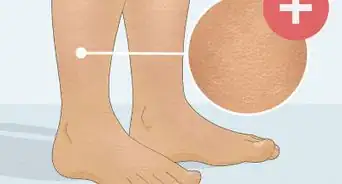This article was co-authored by Navid Malakouti, MD, FAAD. Dr. Navid Malakouti is a Board Certified Dermatologist specializing in cosmetic dermatology, dermatologic surgery, and medical dermatology. He treats patients of all ages for conditions like acne, rosacea, psoriasis, skin cancer, botox, fillers, lasers, and chemical peel. Dr. Malakouti is a Diplomate of the American Board of Dermatology, Fellow of American Academy of Dermatology, American Society for Dermatologic Surgery, and American Society for Laser Medicine and Surgery, and a member of the Skin of Color Society. He holds a BS in Biochemistry and Cell Biology from The University of California, San Diego and an MD from The Virginia Commonwealth University School of Medicine. He completed his Dermatology residency in Washington D.C. at Howard University, VA Medical Center, Children's National Hospital, and the National Institutes of Health.
There are 15 references cited in this article, which can be found at the bottom of the page.
This article has been viewed 206,909 times.
Soft, silky legs are a must-have for short skirts and shorts, not to mention bathing suit season. But what if you find your legs looking dull, cracked, or patchy? Don’t worry: it’s easy to bring tired-looking skin back from the brink with some TLC. Just spend a few extra minutes in the bath or shower giving those gams some pampering, and you’ll be strutting your silky stuff in no time!
Steps
Preparing Your Skin
-
1Soak your legs. Whether in the bathtub or the shower, you should allow your skin and hair to soften before shaving; this will improve the closeness of your shave. Some people suggest soaking in the tub for 15–20 minutes,[1] but according to others just three minutes in the shower is enough to do the trick.
- Try doing the rest of your bathing routine first—body cleansing, shampoo, and conditioner—then following with your shave at the end. This will allow maximum time for your skin to soften, regardless of whether you’re in the bath or shower.
-
2Use lukewarm water. Hot water, though it might feel pleasant, dries out the skin and should be avoided.[2] [3] When showering or bathing, keep the water at a pleasant, moderate temperature.
- Ice cold water should also be avoided, as this is very shocking to the skin.
Advertisement -
3Exfoliate your skin. This is a crucial step that will keep dead skin cells from clogging your razor. It’s sometimes tempting to pass on exfoliating, but you really should put in the effort before every shave.
- Use a salt or sugar scrub from the store or online—you can find a great one at a variety of price points and in a variety of scents. Some good ones to try include Arbonne Awaken Sea Salt Scrub, Soap and Glory Flake Away Body Scrub, and St. Ives Smoothing Apricot Body Wash.
- You can easily make your own scrub at home. Try mixing together 1 1/4 cup of sugar, 1/2 cup of oil (olive, coconut, or baby oil work fine), and 3 tablespoons (44.4 ml) of lemon or lime juice.[4]
- Exfoliation is also great for helping with in-grown hairs, which can be unsightly and ruin your best efforts at getting great skin on your legs.[5]
Removing Your Leg Hair
-
1Shave your legs gently. Use several soft upward strokes with a sharp razor instead of only a few firm ones. This way you’re less likely to cut yourself and you’ll be sure to get all of the little hairs.[6]
- While it may seem easy to use body wash or soap since you’re using it on the rest of your body, these items will dry your skin.[7] It’s best to use a product such as shaving cream or gel that is specifically formulated for the purpose of shaving your legs.[8] This will help you get the smooth, glowing skin you’re after.
- Pay careful attention to how your hair grows. You should be shaving against the grain, and may need to shave up or down in certain areas depending on the direction of the follicles, in order to best remove the hair.
-
2Choose the right blade. Cheap blades won’t get you a close shave. If your hair is fine and thin, you should do fine with a 3- or 4-blade razor, but coarse, thicker hair demands one with 5 blades. It’s also a good idea to use a razor with a built-in lubricant strip if your skin is sensitive [9]
-
3Wax your hair. Waxing removes the root of the hair at the shaft, ensuring super smooth soft skin that lasts a lot longer than a shave does. You can wax at home with a kit from the drug store or you can get your legs waxed by a professional.
- Waxing does hurt when it’s being done (though the pain is brief), so it’s not necessarily the best choice for those with very sensitive skin or who are averse to unnecessary pain.
-
4Use depilatory products. Depilatory creams, lotions, and sprays are chemical products that dissolve the hair on the surface of your skin.[13] You can use these pain-free items in the shower or the bathtub, and they are formulated to remain in place on your skin until you wipe them away with a washcloth.[14]
- Depilatory creams have traditionally been known for their strong odor, but newer versions aren’t nearly as offensive as their old-school counterparts. Some even have a tropical smell!
- Because you’re not pulling the hair out at the root, you’ll need to use depilatory creams, etc., more frequently than you would if you were waxing.[15]
-
5Get laser treatments. A more permanent solution for removing your leg hair is to get several (usually 3–5) laser treatments. These remove the hair from your legs by directing highly concentrated beams of light into the hair follicles.[16]
- Laser hair removal is an expensive option, costing an average of $235 per session. Since it will take several sessions to see permanent results, it’s important to consider the overall cost when deciding on this route.[17]
Moisturizing Your Skin
-
1Lotion right after you shave. As soon as you get out of the shower or bathtub, rub a thick lotion all over your legs. Try to do this while your legs are still a little bit wet (but not soaked), as the water will help lock in the moisture from the lotion.
- Only moisturize after you shave, never before. Moisturizing before you shave will clog the pores and keep you from reaching all of the hair with your razor.[18]
- Avoid lotions that contain alpha-hydroxy or alcohol, as these products can irritate skin that has just been shaven.
- If your skin is particularly dry or prone to eczema, you may want to try a thicker cream as opposed to a lotion. Good options include CeraVe Moisturizing Cream and Cetaphil Moisturizing Cream, both of which are easy to find in stores and online.
-
2Apply lotion frequently. Although post-shave is the most important time to apply lotion, you will want to moisturize daily, especially if you go several days in between shaves. Try to get into a habit of doing it at the same time every day (at night or while getting dressed in the morning, for example) so that you don’t forget.
- Although you want to moisturize frequently, don’t overdo it; too much lotion can lead to clogged pores. Once or twice a day is sufficient.
-
3
Expert Q&A
-
QuestionWhat causes the skin to flake on legs?
 Navid Malakouti, MD, FAADDr. Navid Malakouti is a Board Certified Dermatologist specializing in cosmetic dermatology, dermatologic surgery, and medical dermatology. He treats patients of all ages for conditions like acne, rosacea, psoriasis, skin cancer, botox, fillers, lasers, and chemical peel. Dr. Malakouti is a Diplomate of the American Board of Dermatology, Fellow of American Academy of Dermatology, American Society for Dermatologic Surgery, and American Society for Laser Medicine and Surgery, and a member of the Skin of Color Society. He holds a BS in Biochemistry and Cell Biology from The University of California, San Diego and an MD from The Virginia Commonwealth University School of Medicine. He completed his Dermatology residency in Washington D.C. at Howard University, VA Medical Center, Children's National Hospital, and the National Institutes of Health.
Navid Malakouti, MD, FAADDr. Navid Malakouti is a Board Certified Dermatologist specializing in cosmetic dermatology, dermatologic surgery, and medical dermatology. He treats patients of all ages for conditions like acne, rosacea, psoriasis, skin cancer, botox, fillers, lasers, and chemical peel. Dr. Malakouti is a Diplomate of the American Board of Dermatology, Fellow of American Academy of Dermatology, American Society for Dermatologic Surgery, and American Society for Laser Medicine and Surgery, and a member of the Skin of Color Society. He holds a BS in Biochemistry and Cell Biology from The University of California, San Diego and an MD from The Virginia Commonwealth University School of Medicine. He completed his Dermatology residency in Washington D.C. at Howard University, VA Medical Center, Children's National Hospital, and the National Institutes of Health.
Board Certified Dermatologist Legs in general are more difficult to keep hydrated because blood circulation tends to be poor compared to other parts of the body. You can improve your legs' skin texture with moisturizing oils.
Legs in general are more difficult to keep hydrated because blood circulation tends to be poor compared to other parts of the body. You can improve your legs' skin texture with moisturizing oils. -
QuestionThe skin on my legs is cracking, even in summer! What should I apply?
 Tansy_200Community AnswerYou can use a thick, extra-nourishing body butter. You can buy those at drugstores or online for good prices. Shea butter or coconut oil also work. Don't forget to wear sunscreen every day when your legs are exposed. Moisturize with lotion as soon as you get out of the shower.
Tansy_200Community AnswerYou can use a thick, extra-nourishing body butter. You can buy those at drugstores or online for good prices. Shea butter or coconut oil also work. Don't forget to wear sunscreen every day when your legs are exposed. Moisturize with lotion as soon as you get out of the shower. -
QuestionWhat lotions would you recommend for people who have keratosis pilaris?
 Community AnswerThere are many specialized creams and lotions on the market. Alternatively, coconut oil can also help.
Community AnswerThere are many specialized creams and lotions on the market. Alternatively, coconut oil can also help.
References
- ↑ http://beauty.allwomenstalk.com/marvelous-techniques-for-keeping-your-legs-smooth/8/
- ↑ Navid Malakouti, MD, FAAD. Board Certified Dermatologist. Expert Interview. 19 July 2021.
- ↑ http://beauty.allwomenstalk.com/marvelous-techniques-for-keeping-your-legs-smooth/4/
- ↑ http://www.onegoodthingbyjillee.com/2012/07/diy-skin-smoother-for-silky-soft-legs.html
- ↑ http://www.teenvogue.com/beauty/skin-care/2013-06/shaving-tips-for-smooth-skin
- ↑ http://www.womenshealthmag.com/beauty/tips-from-body-part-models
- ↑ http://www.sheknows.com/beauty-and-style/articles/825967/smooth-legs-101-how-to-get-the-closest-shave
- ↑ http://beauty.allwomenstalk.com/marvelous-techniques-for-keeping-your-legs-smooth/3/
- ↑ http://www.sheknows.com/beauty-and-style/articles/825967/smooth-legs-101-how-to-get-the-closest-shave
- ↑ Navid Malakouti, MD, FAAD. Board Certified Dermatologist. Expert Interview. 19 July 2021.
- ↑ http://beauty.allwomenstalk.com/marvelous-techniques-for-keeping-your-legs-smooth/3/
- ↑ http://www.sheknows.com/beauty-and-style/articles/825967/smooth-legs-101-how-to-get-the-closest-shave
- ↑ http://www.cosmopolitan.com/style-beauty/beauty/how-to/a10343/depilatory-creams/
- ↑ http://www.shape.com/lifestyle/beauty-style/7-things-you-may-not-know-about-hair-removal-should
- ↑ http://www.cosmopolitan.com/style-beauty/beauty/how-to/a10343/depilatory-creams/
- ↑ http://www.webmd.com/beauty/hair-removal/laser-hair-removal
- ↑ http://www.webmd.com/beauty/hair-removal/laser-hair-removal
- ↑ http://beauty.allwomenstalk.com/marvelous-techniques-for-keeping-your-legs-smooth
- ↑ http://beauty.allwomenstalk.com/marvelous-techniques-for-keeping-your-legs-smooth/5/
- ↑ Navid Malakouti, MD, FAAD. Board Certified Dermatologist. Expert Interview. 19 July 2021.
- ↑ http://www.everydayhealth.com/health-report/dry-skin-relief/ways-to-moisturize-dry-skin.aspx
- ↑ http://www.everydayhealth.com/health-report/dry-skin-relief/ways-to-moisturize-dry-skin.aspx
- ↑ http://www.theguardian.com/fashion/2013/jul/29/dry-flaky-legs-what-solution
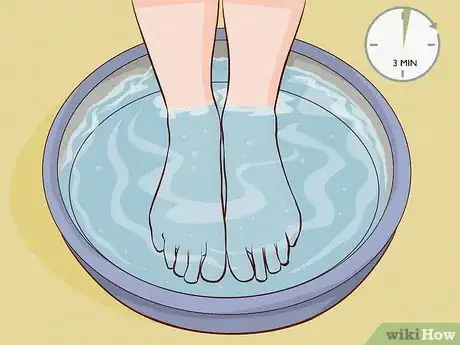


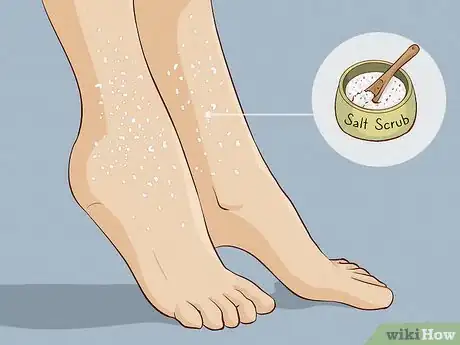
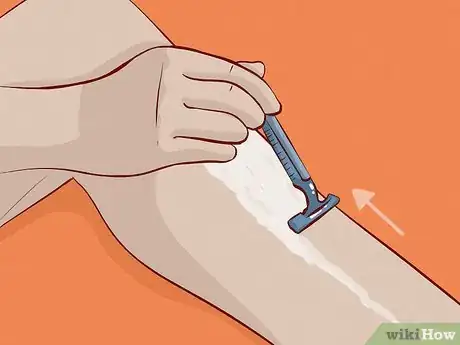
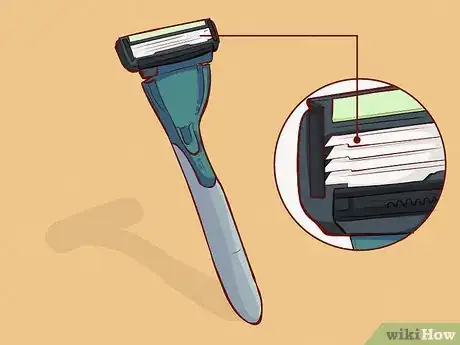
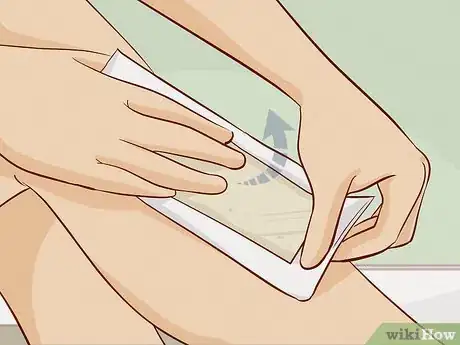
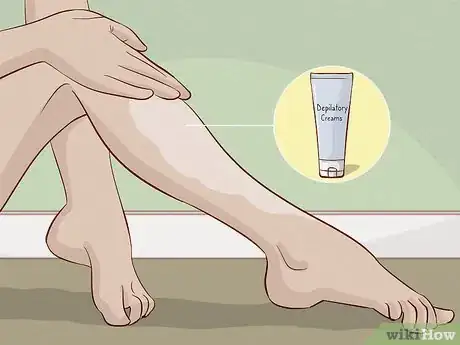
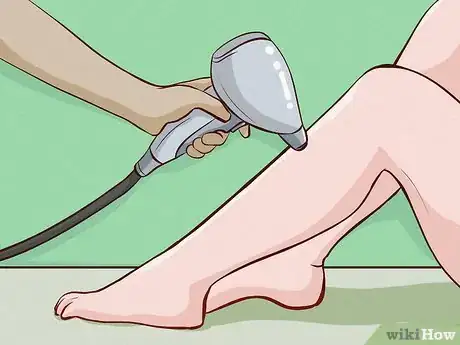

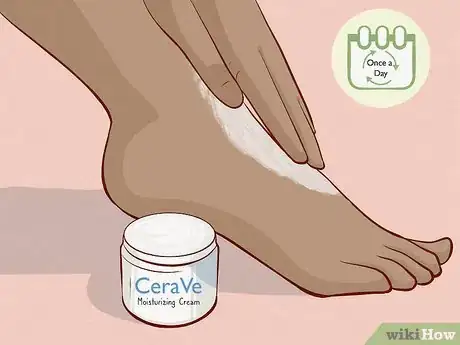

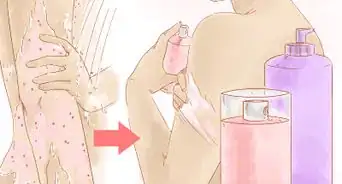
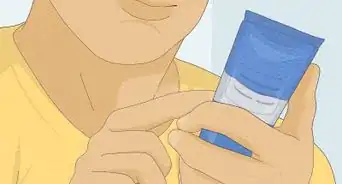


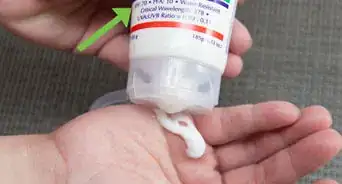
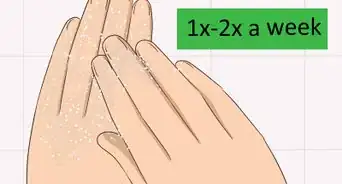
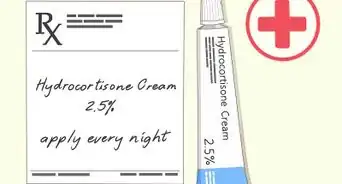

-Step-8-Version-3.webp)
